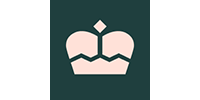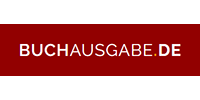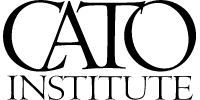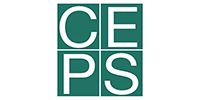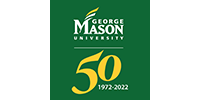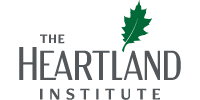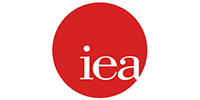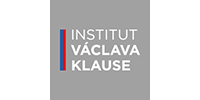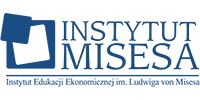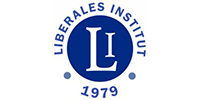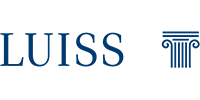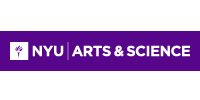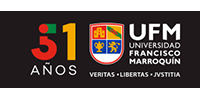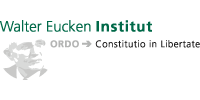Private schools for the poor in developing countries
It is often assumed that governments should provide, regulate and finance education. There are several economic arguments put forward to support this premise: that education is a public good, a merit good, has beneficial externalities to a population and children need protecting from irresponsible parents. But even if all these economic arguments hold true – and there is contention around this – what happens when governments cannot afford to provide schooling for children within their own countries? What happens when a country is plagued by badly functioning public institutions include the judiciary? What happens when a country has recently emerged from civil war? What happens when governments fail to provide quality education for all?
My journey researching school choice in developing country contexts began almost 25 years ago. A chance viewing of a video of five-year-old children singing nursery rhymes in English in a private school in a slum in Hyderabad in India changed my life. Most of my work has been in cities in developing countries. By 2050, over 70% of the world’s population will live in cities, with the most rapid urbanisation occurring in the Global South. What is important for development is freedom of choice and freedom to control one’s own life that will engender well-being and providing purpose and meaning. The poorest are solving things for themselves. The poorest are working together coming up with their own solutions through collective action, dealing with the problems that occur in their daily lives.
The media’s representation of development typically hides the story of community solutions and resilience – this includes schooling. Communities are working together to solve problems through polycentric systems (Ostrom, 2005). There is ‘an order that is in constant flux, and which reacts to changing conditions. Different decision centres are constantly engaged in mutual adjustment, both in terms of competing with one another and in terms of cooperating to solve larger scale problems’ (Tarko, 2017, p. 65; McGinnis, 2016).
My research has responded to the challenge of how generally slums are perceived as homogeneous places and spaces and in economics seen through the lens of equilibrium analysis and macroeconomic aggregation which fail to appreciate social institutions and fluid social networks. This paper will walk you through the evidence, I, with my fellow colleagues, have collected over the last 25 years around school choice in some of the poorest places in the world. From the war-torn cities of Freetown, Sierra Leone and Monrovia, Liberia to east and west Africa – Nigeria, Ghana and Kenya. Not forgetting the vibrant bustling cities in India, including Hyderabad. What also seemed ‘logically impossible’ for the Chinese Education Minister is the existence of low-cost private schools in China. How do parents choose? Do family characteristics affect choice? Which schools are better quality? Why is accountability important? Is this an example of government failure or market success?
When thinking about education and schooling in the global south there are two what I call ‘accepted wisdoms.’ The first is that private schools serve the privileged, everyone else, especially the poor require public/government education. If private education for the poor does exist, then it must be of lower quality than government provision. The second ‘accepted wisdom’ comes from my conversation with a government education minister in Nigeria, but is common not only within government, but also aid agencies. During an interview with BBC Newsnight television, she stated that parents living in slum areas, such as Makoko in Lagos, are in her words “Ignoramuses”. Poor parents are incapable of making decisions around schooling for their children. If they choose low-cost private schools, that is because they are looking for (again her words) a “fake status symbol” sending their children to schools that are “supposedly better” that the free government alternative. Again, when carrying out research in poor areas of Dar Es Salaam, Tanzania the District Education Officer enquired “why are you even contemplate looking for children who were gifted, creative or talented in the slum community. You’ll find none there and waste your funders money”. My research over the last quarter of a century has focused on these myths.
This paper is divided into three parts. The first gives some of my research findings providing data around the number and types of schools in different parts of the developing world along with their quality. The second considers how parents make their school choices. The final part looks at where my research is now focused, that is how empirical data can support the theories of Hayek, Ostrom and Jacobs.
Extent of private schooling
Walking down every alley way and looking on every street corner, my research found large numbers of private schools in several impoverished urban areas of India. In about 19 square miles of notified slum areas in the three poorest zones of Hyderabad, Andhra Pradesh, at least 65 percent of enrolled children (169,260 from a total of 262,075) are attending private unaided schools. The survey located a total of 918 schools, of which 335 (36.5 percent) were unrecognised private schools, 263 (28.6 percent) private recognised schools, and 320 government schools (35 percent) (Tooley et al. 2007b). In East Delhi, in a 20 square km slum area called Shahdara, at least 66 percent of schools are private unaided schools. Out of a total of 265 schools located, 73 are unrecognised schools and 102 are recognised unaided private schools (Tooley and Dixon 2007).
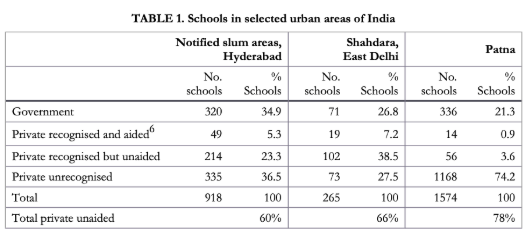
Our research from Patna, Bihar, shows that in all 72 wards of the whole city there are a total of 1,574 schools, of which 79 percent (1,238) are private, compared to 21 percent (336) government. Sixty-nine percent of the 1,224 unaided private schools are low-cost, serving the poor and charging less than Rs. 300 ($5.617) per month (see table 1). Official data from the District Information System for Education (DISE) does not include unrecognised schools—three-quarters of the schools in the city, enrolling two-thirds of school-going children (Rangaraju et al. 2012).
Some similar results have been reported from Africa. In the poor urban and peri-urban areas of Lagos state in Nigeria, 75 percent of school children are attending private schools. In the district of Ga, Ghana, which has about 500,000 inhabitants—around 70 percent of whom live on or below the poverty line—75 percent of the 779 schools located were private, these serving around 65 percent of children (Tooley et al. 2005; 2007a).
Quality of private schooling
My research with James Tooley as set out in his book “The Beautiful Tree” (2009, 177-178) shows that, across several mostly urban localities studied in India, Nigeria, and Ghana, facilities were generally better in private than government schools, including access for children to drinking water, electricity, and teaching aids and materials. Private schools also placed fewer children in each class, i.e., they had smaller pupil-teacher ratios (174-175). In China, where private schools are generally established in remote villages not serviced by public schools, facilities were found somewhat superior in government schools, but pupil- teacher ratios were comparable between private and public schools (185-186).
Parents in India also want their children to attend private schools because they purportedly teach all subjects in English. Many, perhaps most, private schools are English medium, while government schools generally teach English as a subject and typically only from the age of 11 years (Tooley and Dixon 2002). Parents believe that learning through English helps their child attain better opportunities after school in both employment and further education. Parents typically are of the opinion that if their child can communicate in English this then provides them a better chance of lifting themselves and their families out of poverty. As for pupil achievement, what do the data show when comparing government and low-cost private schools? Testing of children in various subjects including maths, English, and home language has been undertaken in developing countries around the world. Data have also been gathered on pupils’ family background, innate ability, school and teacher characteristics in order to control not only for school choice and therefore selection bias but take into account peer influences and other variables that might affect achievement. Various analytical techniques have been used to analyse the data, including multi-level modelling and the Heckman-Lee procedure. Typically, the results show that pupils in low-cost private schools outperform those in government schools, and at a fraction of the teacher cost (Tooley et al. 2011; Tooley et al. 2010).
Current Research
My current research, funded by the Rising Tide Foundation, takes forward that of the entrepreneurial spirit of low-cost private schools. The problem that is investigated is the effect neighbourhood choices and decisions have on enterprise, empowerment, resilience, trust, dignity and engaging in life that has inherent value. Our approach allows for community voice looking at patterns within the slum areas where people self-organise with a wide diversity of institutions in place to solve problems. Collaborating with different disciplines and working in the communities themselves informs the research and the project’s findings. As Ostrom states “people have found ways of agreeing their own rules and extracting themselves from the problem”.
This research takes forward that of Jane Jacobs (Jacobs, 1961) who argues that urban renewal and slum clearance does not respect the needs of city-dwellers. The cities and their slums are living beings and ecosystems. As Jacobs legacy states choosing to stay in a spontaneously developed slum implies that people have an intense attachment to their neighbourhood. They believe the neighbourhood is unique and irreplaceable with a multitude of relationships and characters that empower its citizens to become advocates for their place (Jacobs, 1961; Ostrom and Ostrom, 2014; Goldsmith and Lynne, 2009). For Jacobs a living city is a ‘settlement that consistently generates its economic growth from its own local economy’ (1969, 262).
Individuals are located into a matrix of networks and action spaces. Information and opportunities filter through the networks allowing for unpredictable and innovative
directions of the dynamic processes. The dynamic process allows diversity and density to give rise to discovery and development enabling economic freedom and tolerance (Jacobs, 1968, 3- 48). Communities are then able to create, discover and then solve social problems typically from the ground up. The empirical data gathered from the slum neighbourhoods provides evidence to support the theories of Hayek, Jacobs and Ostrom. That is that slums within cities are a spontaneous order. Dynamic social networks and market competition serve as organising principals where tolerance and inclusivity rather than distrust and exclusivity are the norm allowing economic development to take place.
Slums are mini cities, within the city region and as such provide evidence of Jacob’s ‘fractal’ theory. Thus, the dynamics taking place at the level of a neighbourhood still operate at the level of the city and beyond. Our project gives real world relevance by looking at patterns in daily lives, instigating a rich socioeconomic framework grounded in a basic understanding of how and why slums work, providing lessons about economics and urbanism. Ostrom spent a lifetime studying communities in culturally diverse locations. Through her work Ostrom found that communities would establish rules and enforce mechanisms that were effective and flexible to solve common pool resource problems. Communities can come up with their own governance arrangements based on local norms and conventions as well as self-regulating (Ostrom, 1990). Our new and ongoing project proves just that (Humble et al., 2023).
Professor Pauline Dixon, PhD, FRSA, FAcSS
References
Goldsmith, S. A., and Lynne, E. (2009). What We See: Advancing the Observations of Jane Jacobs. Oakland, California: New Village Press.
Humble S, Sharma A, Rangaraju B, Dixon P, Pennington M. Associations between neighbourhood social cohesion and subjective well-being in two different informal settlement types in Delhi, India: a quantitative cross-sectional study. BMJ Open 2023, 13(4), e067680.
Jacobs, Jane. (1961). The Death and Life of Great American Cities, New York: Vintage Books.
Jacobs, Jane. (1968). The Economy of Cities, New York: Vintage Books.
McGinnis, M. D. (2016). Polycentric Governance in Theory and Practice: Dimensions of Aspiration and Practical Limitations (Feb 29, 2016). SSRN.
Ostrom, E., and Ostrom, V. (2014). Choice, Rules and Collective Action: The Ostroms on the study of institutions and governance, Colchester, ECPR Press.
Ostrom, E. (2005). Understanding Institutional Diversity, Princeton, NJ: Princeton University Press.
Ostrom, E. (1990). Governing the Commons: The Evolution of Institutions for Collective Action, Cambridge: Cambridge University Press.
Rangaraju, Bala, James Tooley, and Pauline Dixon. 2012. The Private School Revolution in Bihar: Findings from a Survey in Urban Patna. Delhi: India Institute.
Tarko, V. (2017). Elinor Ostrom: An Intellectual Biography, London: Rowan and Littlefield International Ltd.
Tooley, James, and Pauline Dixon. (2002). Private Schools for the Poor: A Case Study from India. Reading, UK: CfBT.
Tooley, James, and Pauline Dixon. (2005). Is There a Conflict Between Commercial Gain and Concern for the Poor? Evidence from Private Schools for the Poor in India and Nigeria. Economic Affairs 25(2): 20-26.
Tooley, James, and Pauline Dixon. (2007). Private Schooling for Low Income Families: A Census and Comparative Survey in East Delhi, India. International Journal of Educational Development 27: 205-219.
Tooley, James, Pauline Dixon, and Isaac Amuah. (2007a). Private and Public Schooling in Ga, Ghana: A Census and Comparative Survey. International Review of Education 53(3-4): 389-415.
Tooley, James, Pauline Dixon, and S. V. Gomathi. 2007b. Private Schools and the Millennium Development Goal of Universal Primary Education: A Census and Comparative Survey in Hyderabad, India. Oxford Review of Education 33(5): 539-560.
Tooley, J. (2009) The Beautiful Tree, Washington D.C: CATO
Tooley, James, Pauline Dixon, Yarim Shamsan, and Ian Schagen. (2010). The Relative Quality and Cost-Effectiveness of Private and Public Schools for Low-Income Families: A
Case Study in a Developing Country. School Effectiveness and School Improvement 21(2): 117-144
Tooley, James, Yan Bao, Pauline Dixon, and John Merrifield. (2011). School Choice and Academic Performance: Some Evidence From Developing Countries. Journal of School
Choice: Research, Theory, and Reform 5(1): 1-39

